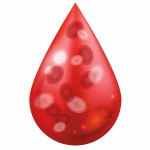Compared with other high-income Western nations, the United States fares remarkably poorly in getting people with HIV diagnosed, into stable care, on treatment and to an undetectable viral load, aidsmap reports. Researchers conducted an analysis of the “treatment cascade” figures for Australia, British Columbia (statistics for all of Canada were not available), Denmark, France, the Netherlands, the United Kingdom and the United States. Results were presented at the HIV Drug Therapy Glasgow conference in Scotland.
The estimated rates of HIV diagnosis among the countries ranged from a low of 71 percent in British Columbia to a high of 86 percent in Australia, with the United States at 82 percent. The United States had the lowest rate of linkage to care, at 66 percent, and Denmark had the highest at 81 percent. The United States had by far the lowest rate of HIV-positive people retained in care at 37 percent, with British Columbia the next lowest at 57 percent. Australia’s 76 percent care-retention rate was the highest.
Because of the United States’ low retention figures, the remainder of the nation’s figures were also markedly lower than the other countries’. The U.S. rate of people with HIV taking antiretrovirals was 33 percent. The high for that figure was the United Kingdom’s 67 percent. The rates of viral suppression were as follows: the United States, 25 percent; British Columbia, 35 percent; France, 52 percent, the Netherlands, 53 percent, the United Kingdom, 58 percent; Denmark, 59 percent; and Australia, 62 percent.
To read the aidsmap story, click here.
To read the conference abstract, click here.
Advertisement
Advertisement
Advertisement






2 Comments
2 Comments